- Home
- L. Ron Hubbard
The Baron of Coyote River Page 9
The Baron of Coyote River Read online
Page 9
shorthorn: a tenderfoot; a newcomer or a person not used to rough living and hardships.
Sierras: Sierra Nevada mountain range of eastern California extending between the Sacramento and San Joaquin valleys and the Nevada border.
slick-ear: 1. a range animal lacking an earmark; an unbranded and unmarked animal. 2. “wet behind the ears”; someone who is inexperienced or naïve.
sougan: bedroll; a blanket or quilt with a protective canvas tarp for use on a bunk or on the range.
sowbelly: salt pork; pork cured in salt, especially fatty pork from the back, side or belly of a hog.
Stetson: as the most popular broad-brimmed hat in the West, it became the generic name for hat. John B. Stetson was a master hat maker and founder of the company that has been making Stetsons since 1865. Not only can the Stetson stand up to a terrific amount of beating, the cowboy’s hat has more different uses than any other garment he wears. It keeps the sun out of the eyes and off the neck; it serves as an umbrella; it makes a great fan, which sometimes is needed when building a fire or shunting cattle about; the brim serves as a cup to water oneself, or as a bucket to water the horse or put out the fire.
stint: restrain; restrict.
string: a group of animals, especially saddle horses, owned or used by one person.
tapaderos: heavy leather around the front of stirrups to protect the rider’s foot.
taps: a bugle call or drum signal sounded at military funerals and memorial services.
teamsters: individuals who drive a team of horses, especially in hauling freight.
trail herd: a herd of cattle driven along a trail, especially from their home range to market.
Waterloo, had his: variation of “meet your Waterloo,” meaning that one who has previously been successful has been defeated by someone who is too strong for one. It comes from the “Battle of Waterloo,” fought in 1815, which was Napoleon’s last battle. This defeat put a final end to his rule.
wet gunnysacking: a branding technique used by rustlers. Branding is done through a wet gunnysack, making a temporary brand that looks permanent.
whittled: carved something out of wood, usually something small enough to hold in the hand, by cutting away small pieces.
wolfer: a man hired by a rancher to trap and hunt wolves on his range.
wrangler: a cowboy who takes care of the saddle horses.
L. Ron Hubbard in the
Golden Age of
Pulp Fiction
In writing an adventure story
a writer has to know that he is adventuring
for a lot of people who cannot.
The writer has to take them here and there
about the globe and show them
excitement and love and realism.
As long as that writer is living the part of an
adventurer when he is hammering
the keys, he is succeeding with his story.
Adventuring is a state of mind.
If you adventure through life, you have a
good chance to be a success on paper.
Adventure doesn’t mean globe-trotting,
exactly, and it doesn’t mean great deeds.
Adventuring is like art.
You have to live it to make it real.
— L. Ron Hubbard
L. Ron Hubbard
and American
Pulp Fiction
BORN March 13, 1911, L. Ron Hubbard lived a life at least as expansive as the stories with which he enthralled a hundred million readers through a fifty-year career.
Originally hailing from Tilden, Nebraska, he spent his formative years in a classically rugged Montana, replete with the cowpunchers, lawmen and desperadoes who would later people his Wild West adventures. And lest anyone imagine those adventures were drawn from vicarious experience, he was not only breaking broncs at a tender age, he was also among the few whites ever admitted into Blackfoot society as a bona fide blood brother. While if only to round out an otherwise rough and tumble youth, his mother was that rarity of her time—a thoroughly educated woman—who introduced her son to the classics of Occidental literature even before his seventh birthday.
But as any dedicated L. Ron Hubbard reader will attest, his world extended far beyond Montana. In point of fact, and as the son of a United States naval officer, by the age of eighteen he had traveled over a quarter of a million miles. Included therein were three Pacific crossings to a then still mysterious Asia, where he ran with the likes of Her British Majesty’s agent-in-place for North China, and the last in the line of Royal Magicians from the court of Kublai Khan. For the record, L. Ron Hubbard was also among the first Westerners to gain admittance to forbidden Tibetan monasteries below Manchuria, and his photographs of China’s Great Wall long graced American geography texts.
Upon his return to the United States and a hasty completion of his interrupted high school education, the young Ron Hubbard entered George Washington University. There, as fans of his aerial adventures may have heard, he earned his wings as a pioneering barnstormer at the dawn of American aviation. He also earned a place in free-flight record books for the longest sustained flight above Chicago. Moreover, as a roving reporter for Sportsman Pilot (featuring his first professionally penned articles), he further helped inspire a generation of pilots who would take America to world airpower.
L. Ron Hubbard, left, at Congressional Airport, Washington, DC, 1931, with members of George Washington University flying club.
Immediately beyond his sophomore year, Ron embarked on the first of his famed ethnological expeditions, initially to then untrammeled Caribbean shores (descriptions of which would later fill a whole series of West Indies mystery-thrillers). That the Puerto Rican interior would also figure into the future of Ron Hubbard stories was likewise no accident. For in addition to cultural studies of the island, a 1932–33 LRH expedition is rightly remembered as conducting the first complete mineralogical survey of a Puerto Rico under United States jurisdiction.
There was many another adventure along this vein: As a lifetime member of the famed Explorers Club, L. Ron Hubbard charted North Pacific waters with the first shipboard radio direction finder, and so pioneered a long-range navigation system universally employed until the late twentieth century. While not to put too fine an edge on it, he also held a rare Master Mariner’s license to pilot any vessel, of any tonnage in any ocean.
Capt. L. Ron Hubbard in Ketchikan, Alaska, 1940, on his Alaskan Radio Experimental Expedition, the first of three voyages conducted under the Explorers Club Flag.
Yet lest we stray too far afield, there is an LRH note at this juncture in his saga, and it reads in part:
“I started out writing for the pulps, writing the best I knew, writing for every mag on the stands, slanting as well as I could.”
To which one might add: His earliest submissions date from the summer of 1934, and included tales drawn from true-to-life Asian adventures, with characters roughly modeled on British/American intelligence operatives he had known in Shanghai. His early Westerns were similarly peppered with details drawn from personal experience. Although therein lay a first hard lesson from the often cruel world of the pulps. His first Westerns were soundly rejected as lacking the authenticity of a Max Brand yarn (a particularly frustrating comment given L. Ron Hubbard’s Westerns came straight from his Montana homeland, while Max Brand was a mediocre New York poet named Frederick Schiller Faust, who turned out implausible six-shooter tales from the terrace of an Italian villa).
Nevertheless, and needless to say, L. Ron Hubbard persevered and soon earned a reputation as among the most publishable names in pulp fiction, with a ninety percent placement rate of first-draft manuscripts. He was also among the most prolific, averaging between seventy and a hundred thousand words a month. Hence the rumors that L. Ron Hubbard had redesigned a typewriter
for faster keyboard action and pounded out manuscripts on a continuous roll of butcher paper to save the precious seconds it took to insert a single sheet of paper into manual typewriters of the day.
L. Ron Hubbard, circa 1930, at the outset of a literary career that would finally span half a century.
That all L. Ron Hubbard stories did not run beneath said byline is yet another aspect of pulp fiction lore. That is, as publishers periodically rejected manuscripts from top-drawer authors if only to avoid paying top dollar, L. Ron Hubbard and company just as frequently replied with submissions under various pseudonyms. In Ron’s case, the list included: Rene Lafayette, Captain Charles Gordon, Lt. Scott Morgan and the notorious Kurt von Rachen—supposedly on the lam for a murder rap, while hammering out two-fisted prose in Argentina. The point: While L. Ron Hubbard as Ken Martin spun stories of Southeast Asian intrigue, LRH as Barry Randolph authored tales of romance on the Western range—which, stretching between a dozen genres is how he came to stand among the two hundred elite authors providing close to a million tales through the glory days of American Pulp Fiction.
A Man of Many Names
Between 1934 and 1950, L. Ron Hubbard authored more than fifteen million words of fiction in more than two hundred classic publications.
To supply his fans and editors with stories across an array of genres and pulp titles, he adopted fifteen pseudonyms in addition to his already renowned L. Ron Hubbard byline.
______
Winchester Remington Colt
Lt. Jonathan Daly
Capt. Charles Gordon
Capt. L. Ron Hubbard
Bernard Hubbel
Michael Keith
Rene Lafayette
Legionnaire 148
Legionnaire 14830
Ken Martin
Scott Morgan
Lt. Scott Morgan
Kurt von Rachen
Barry Randolph
Capt. Humbert Reynolds
In evidence of exactly that, by 1936 L. Ron Hubbard was literally leading pulp fiction’s elite as president of New York’s American Fiction Guild. Members included a veritable pulp hall of fame: Lester “Doc Savage” Dent, Walter “The Shadow” Gibson, and the legendary Dashiell Hammett—to cite but a few.
Also in evidence of just where L. Ron Hubbard stood within his first two years on the American pulp circuit: By the spring of 1937, he was ensconced in Hollywood, adopting a Caribbean thriller for Columbia Pictures, remembered today as The Secret of Treasure Island. Comprising fifteen thirty-minute episodes, the L. Ron Hubbard screenplay led to the most profitable matinée serial in Hollywood history. In accord with Hollywood culture, he was thereafter continually called upon to rewrite/doctor scripts—most famously for long-time friend and fellow adventurer Clark Gable.
The 1937 Secret of Treasure Island, a fifteen-episode serial adapted for the screen by L. Ron Hubbard from his novel, Murder at Pirate Castle.
In the interim—and herein lies another distinctive chapter of the L. Ron Hubbard story—he continually worked to open Pulp Kingdom gates to up-and-coming authors. Or, for that matter, anyone who wished to write. It was a fairly unconventional stance, as markets were already thin and competition razor sharp. But the fact remains, it was an L. Ron Hubbard hallmark that he vehemently lobbied on behalf of young authors—regularly supplying instructional articles to trade journals, guest-lecturing to short story classes at George Washington University and Harvard, and even founding his own creative writing competition. It was established in 1940, dubbed the Golden Pen, and guaranteed winners both New York representation and publication in Argosy.
But it was John W. Campbell Jr.’s Astounding Science Fiction that finally proved the most memorable LRH vehicle. While every fan of L. Ron Hubbard’s galactic epics undoubtedly knows the story, it nonetheless bears repeating: By late 1938, the pulp publishing magnate of Street & Smith was determined to revamp Astounding Science Fiction for broader readership. In particular, senior editorial director F. Orlin Tremaine called for stories with a stronger human element. When acting editor John W. Campbell balked, preferring his spaceship-driven tales, Tremaine enlisted Hubbard. Hubbard, in turn, replied with the genre’s first truly character-driven works, wherein heroes are pitted not against bug-eyed monsters but the mystery and majesty of deep space itself—and thus was launched the Golden Age of Science Fiction.
The names alone are enough to quicken the pulse of any science fiction aficionado, including LRH friend and protégé, Robert Heinlein, Isaac Asimov, A. E. van Vogt and Ray Bradbury. Moreover, when coupled with LRH stories of fantasy, we further come to what’s rightly been described as the foundation of every modern tale of horror: L. Ron Hubbard’s immortal Fear. It was rightly proclaimed by Stephen King as one of the very few works to genuinely warrant that overworked term “classic”—as in: “This is a classic tale of creeping, surreal menace and horror. . . . This is one of the really, really good ones.”
L. Ron Hubbard, 1948, among fellow science fiction luminaries at the World Science Fiction Convention in Toronto.
To accommodate the greater body of L. Ron Hubbard fantasies, Street & Smith inaugurated Unknown—a classic pulp if there ever was one, and wherein readers were soon thrilling to the likes of Typewriter in the Sky and Slaves of Sleep of which Frederik Pohl would declare: “There are bits and pieces from Ron’s work that became part of the language in ways that very few other writers managed.”
And, indeed, at J. W. Campbell Jr.’s insistence, Ron was regularly drawing on themes from the Arabian Nights and so introducing readers to a world of genies, jinn, Aladdin and Sinbad—all of which, of course, continue to float through cultural mythology to this day.
At least as influential in terms of post-apocalypse stories was L. Ron Hubbard’s 1940 Final Blackout. Generally acclaimed as the finest anti-war novel of the decade and among the ten best works of the genre ever authored—here, too, was a tale that would live on in ways few other writers imagined. Hence, the later Robert Heinlein verdict: “Final Blackout is as perfect a piece of science fiction as has ever been written.”
Like many another who both lived and wrote American pulp adventure, the war proved a tragic end to Ron’s sojourn in the pulps. He served with distinction in four theaters and was highly decorated for commanding corvettes in the North Pacific. He was also grievously wounded in combat, lost many a close friend and colleague and thus resolved to say farewell to pulp fiction and devote himself to what it had supported these many years—namely, his serious research.
Portland, Oregon, 1943; L. Ron Hubbard, captain of the US Navy subchaser PC 815.
But in no way was the LRH literary saga at an end, for as he wrote some thirty years later, in 1980:
“Recently there came a period when I had little to do. This was novel in a life so crammed with busy years, and I decided to amuse myself by writing a novel that was pure science fiction.”
That work was Battlefield Earth: A Saga of the Year 3000. It was an immediate New York Times bestseller and, in fact, the first international science fiction blockbuster in decades. It was not, however, L. Ron Hubbard’s magnum opus, as that distinction is generally reserved for his next and final work: The 1.2 million word Mission Earth.
How he managed those 1.2 million words in just over twelve months is yet another piece of the L. Ron Hubbard legend. But the fact remains, he did indeed author a ten-volume dekalogy that lives in publishing history for the fact that each and every volume of the series was also a New York Times bestseller.
Moreover, as subsequent generations discovered L. Ron Hubbard through republished works and novelizations of his screenplays, the mere fact of his name on a cover signaled an international bestseller. . . . Until, to date, sales of his works exceed hundreds of millions, and he otherwise remains among the most enduring and widely read authors in
literary history. Although as a final word on the tales of L. Ron Hubbard, perhaps it’s enough to simply reiterate what editors told readers in the glory days of American Pulp Fiction:
He writes the way he does, brothers, because he’s been there, seen it and done it!
For more information about the life and works of L. Ron Hubbard,
go to www.lronhubbard.org.
The Stories from the
Golden Age
Your ticket to adventure starts here with the Stories from the Golden Age collection by master storyteller L. Ron Hubbard. These gripping tales are set in a kaleidoscope of exotic locales and brim with fascinating characters, including some of the most vile villains, dangerous dames and brazen heroes you’ll ever get to meet.
The entire collection of over one hundred and fifty stories is being released in a series of eighty books and audiobooks. For an up-to-date listing of available titles, go to www.goldenagestories.com.
AIR ADVENTURE
Arctic Wings
The Battling Pilot
Boomerang Bomber
The Crate Killer
The Dive Bomber
Forbidden Gold
Hurtling Wings
The Lieutenant Takes the Sky
Man-Killers of the Air
On Blazing Wings
Red Death Over China
Sabotage in the Sky
Sky Birds Dare!
The Sky-Crasher
Trouble on His Wings
Wings Over Ethiopia
FAR-FLUNG ADVENTURE
The Adventure of “X”
All Frontiers Are Jealous
The Barbarians
The Black Sultan
Black Towers to Danger
The Bold Dare All
Buckley Plays a Hunch
The Cossack

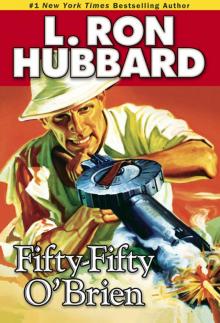 Fifty-Fifty O'Brien
Fifty-Fifty O'Brien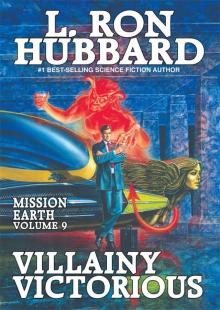 Villainy Victorious
Villainy Victorious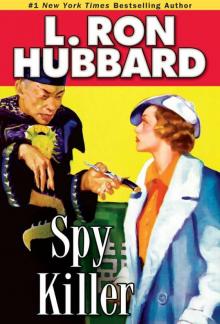 Spy Killer
Spy Killer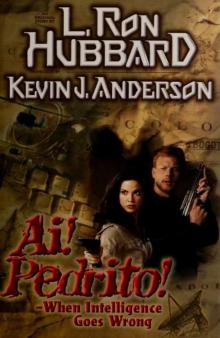 Ai! Pedrito!: When Intelligence Goes Wrong
Ai! Pedrito!: When Intelligence Goes Wrong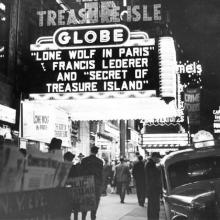 The Dangerous Dimension
The Dangerous Dimension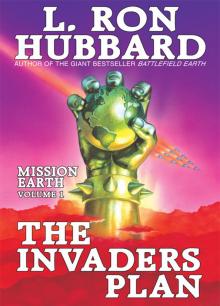 Mission Earth Volume 1: The Invaders Plan
Mission Earth Volume 1: The Invaders Plan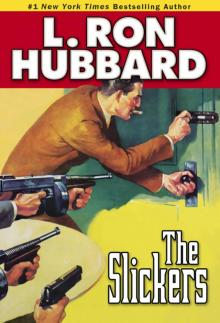 The Slickers
The Slickers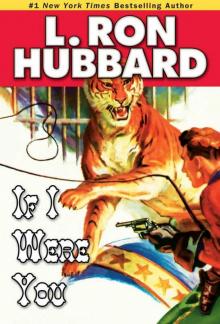 If I Were You
If I Were You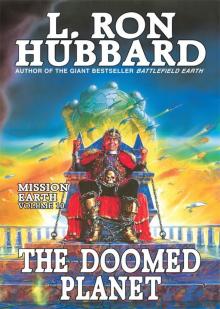 The Doomed Planet
The Doomed Planet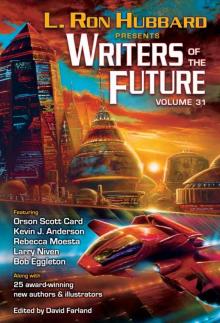 Writers of the Future Volume 31
Writers of the Future Volume 31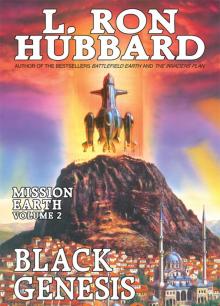 Mission Earth Volume 2: Black Genesis
Mission Earth Volume 2: Black Genesis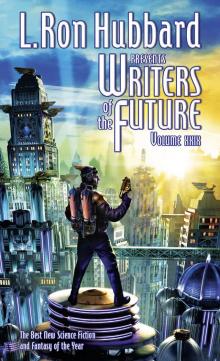 Writers of the Future: 29
Writers of the Future: 29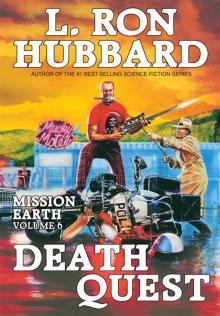 Death Quest
Death Quest The Enemy Within
The Enemy Within Orders Is Orders
Orders Is Orders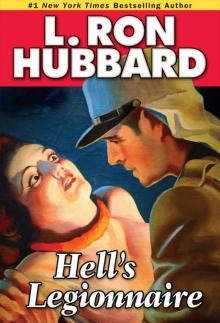 Hell's Legionnaire
Hell's Legionnaire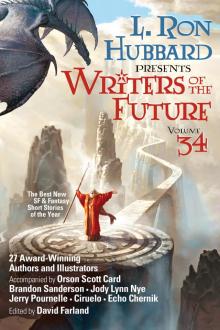 L. Ron Hubbard Presents Writers of the Future 34
L. Ron Hubbard Presents Writers of the Future 34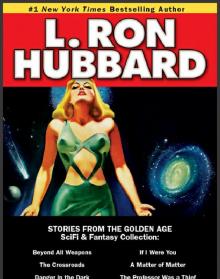 The Scifi & Fantasy Collection
The Scifi & Fantasy Collection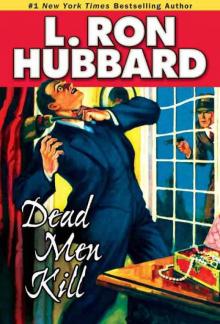 Dead Men Kill
Dead Men Kill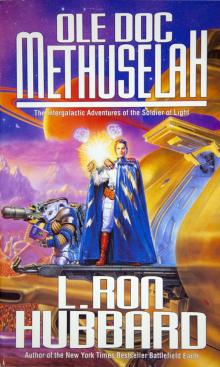 Ole Doc Methuselah: The Intergalactic Adventures of the Soldier of Light
Ole Doc Methuselah: The Intergalactic Adventures of the Soldier of Light Shadows From Boot Hill
Shadows From Boot Hill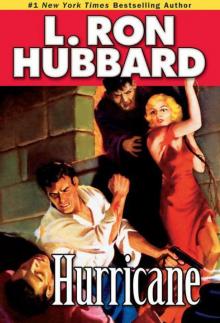 Hurricane
Hurricane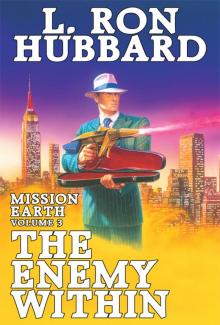 Mission Earth Volume 3: The Enemy Within
Mission Earth Volume 3: The Enemy Within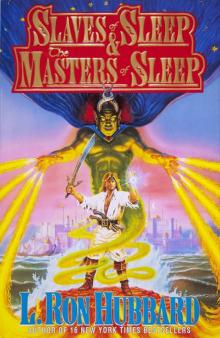 Slaves of Sleep & the Masters of Sleep
Slaves of Sleep & the Masters of Sleep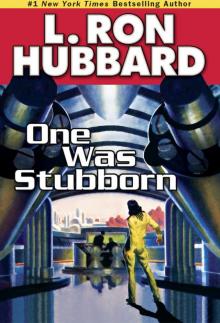 One Was Stubborn
One Was Stubborn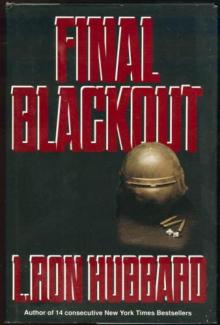 Final Blackout: A Futuristic War Novel
Final Blackout: A Futuristic War Novel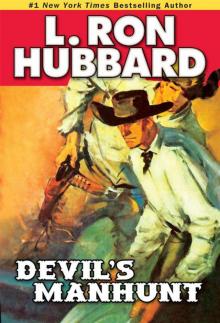 Devil's Manhunt
Devil's Manhunt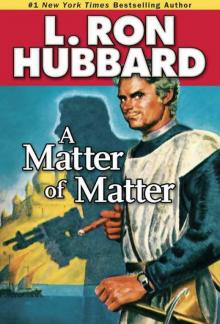 A Matter of Matter
A Matter of Matter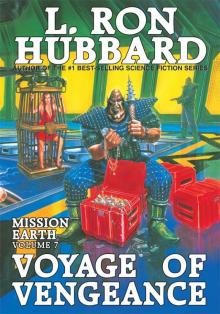 Voyage of Vengeance
Voyage of Vengeance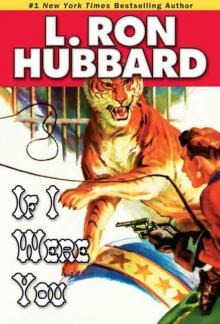 If I Were You (Science Fiction & Fantasy Short Stories Collection)
If I Were You (Science Fiction & Fantasy Short Stories Collection)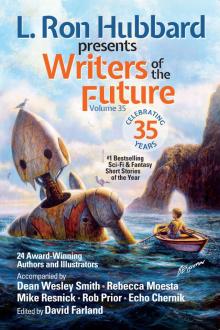 L. Ron Hubbard Presents Writers of the Future Volume 35
L. Ron Hubbard Presents Writers of the Future Volume 35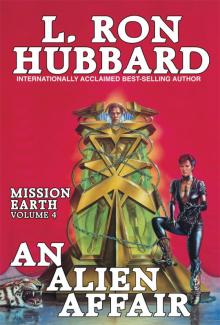 Mission Earth Volume 4: An Alien Affair
Mission Earth Volume 4: An Alien Affair Black Genesis
Black Genesis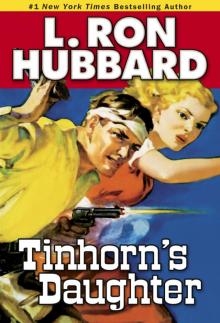 Tinhorn's Daughter
Tinhorn's Daughter Trouble on His Wings
Trouble on His Wings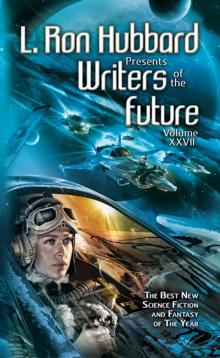 Writers of the Future Volume 27: The Best New Science Fiction and Fantasy of the Year
Writers of the Future Volume 27: The Best New Science Fiction and Fantasy of the Year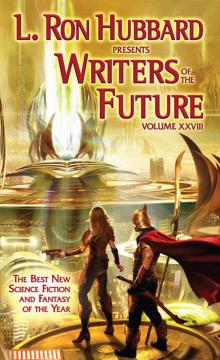 Writers of the Future Volume 28: The Best New Science Fiction and Fantasy of the Year
Writers of the Future Volume 28: The Best New Science Fiction and Fantasy of the Year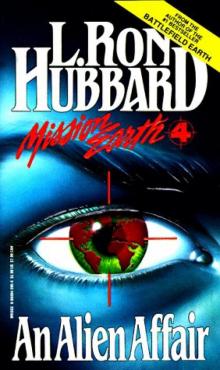 An Alien Affair
An Alien Affair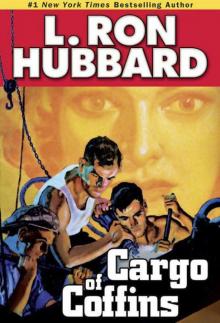 Cargo of Coffins
Cargo of Coffins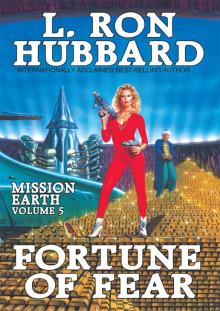 Mission Earth Volume 5: Fortune of Fear
Mission Earth Volume 5: Fortune of Fear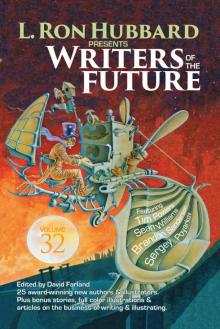 Writers of the Future 32 Science Fiction & Fantasy Anthology
Writers of the Future 32 Science Fiction & Fantasy Anthology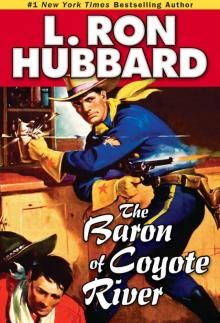 The Baron of Coyote River
The Baron of Coyote River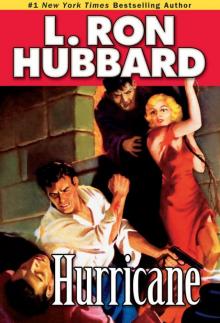 Hurricane (Stories From the Golden Age)
Hurricane (Stories From the Golden Age)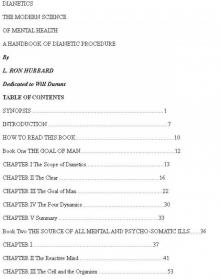 Dianetics: The Modern Science of Mental Health
Dianetics: The Modern Science of Mental Health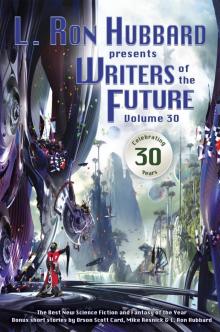 Writers of the Future, Volume 30
Writers of the Future, Volume 30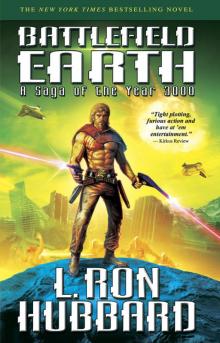 Battlefield Earth: A Saga of the Year 3000
Battlefield Earth: A Saga of the Year 3000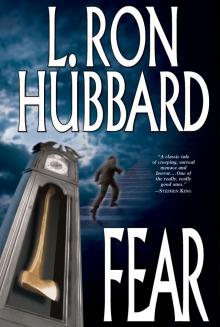 Fear
Fear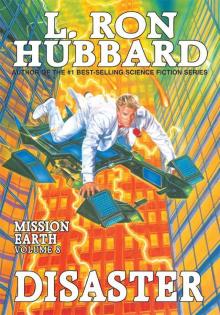 Disaster
Disaster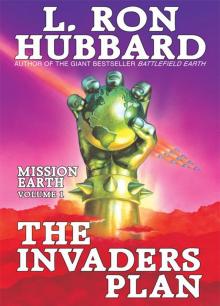 Invaders Plan, The: Mission Earth Volume 1
Invaders Plan, The: Mission Earth Volume 1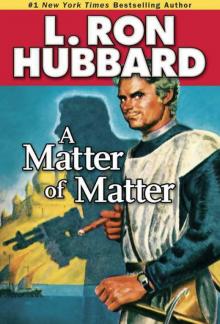 A Matter of Matter (Stories from the Golden Age)
A Matter of Matter (Stories from the Golden Age)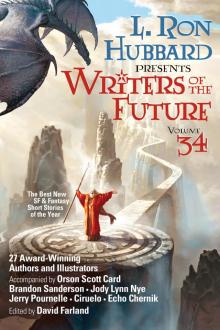 Writers of the Future Volume 34
Writers of the Future Volume 34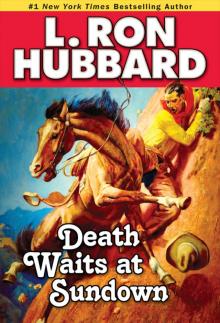 Death Waits at Sundown
Death Waits at Sundown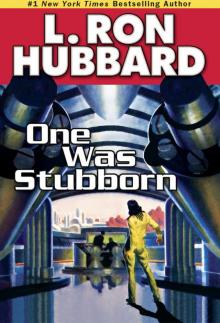 One Was Stubbron
One Was Stubbron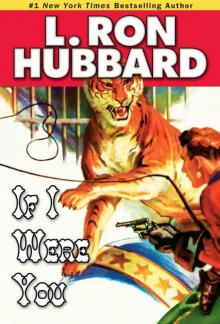 If I Were You (Stories from the Golden Age)
If I Were You (Stories from the Golden Age) Writers of the Future 32 Science Fiction & Fantasy Anthology (L. Ron Hubbard Presents Writers of the Future)
Writers of the Future 32 Science Fiction & Fantasy Anthology (L. Ron Hubbard Presents Writers of the Future)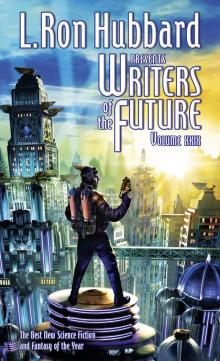 Writers of the Future, Volume 29
Writers of the Future, Volume 29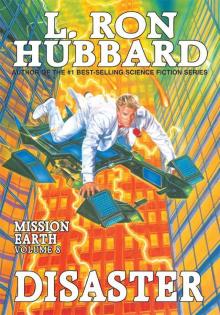 Mission Earth Volume 8: Disaster
Mission Earth Volume 8: Disaster Mission Earth 6: Death Quest
Mission Earth 6: Death Quest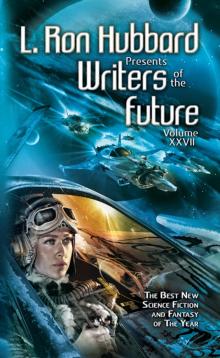 Writers of the Future, Volume 27
Writers of the Future, Volume 27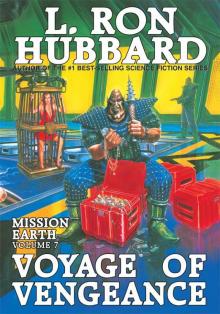 Mission Earth Volume 7: Voyage of Vengeance
Mission Earth Volume 7: Voyage of Vengeance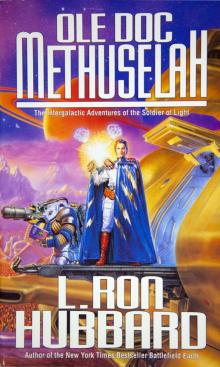 Ole Doc Methuselah
Ole Doc Methuselah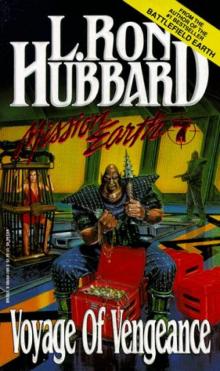 Mission Earth 07: Voyage of Vengeance
Mission Earth 07: Voyage of Vengeance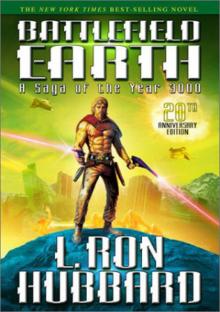 Battlefield Earth
Battlefield Earth Fortune of Fear
Fortune of Fear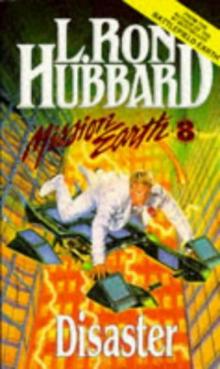 Mission Earth 8: Disaster
Mission Earth 8: Disaster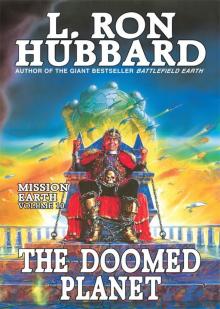 Mission Earth Volume 10: The Doomed Planet
Mission Earth Volume 10: The Doomed Planet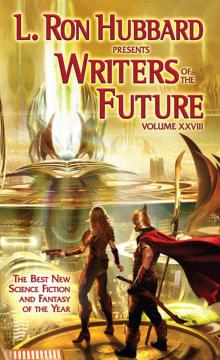 Writers of the Future, Volume 28
Writers of the Future, Volume 28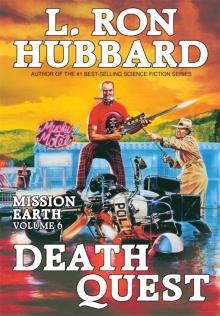 Mission Earth Volume 6: Death Quest
Mission Earth Volume 6: Death Quest Dead Men Kill (Stories from the Golden Age)
Dead Men Kill (Stories from the Golden Age)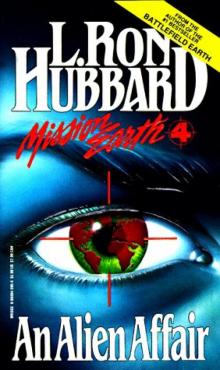 Mission Earth 4: An Alien Affair
Mission Earth 4: An Alien Affair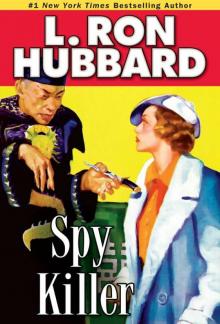 Spy Killer (Stories from the Golden Age)
Spy Killer (Stories from the Golden Age)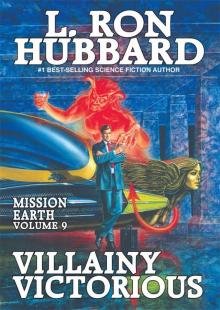 Mission Earth Volume 9: Villainy Victorious
Mission Earth Volume 9: Villainy Victorious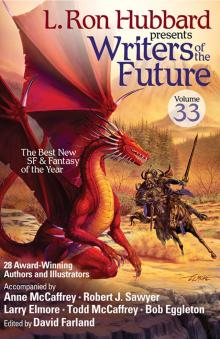 L. Ron Hubbard Presents Writers of the Future, Volume 33
L. Ron Hubbard Presents Writers of the Future, Volume 33